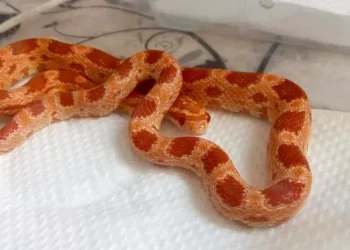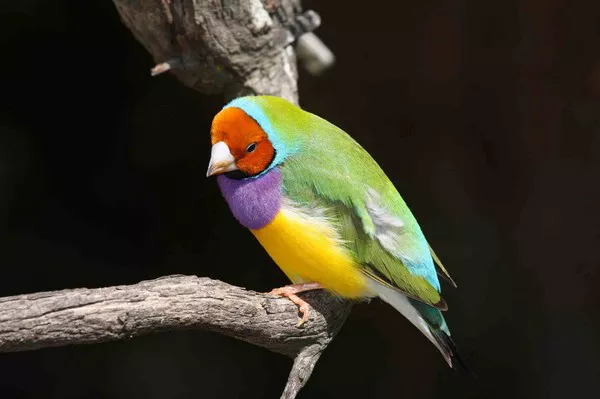When it comes to rabbits, most people think of the small, fluffy creatures commonly kept as pets, such as the Netherland Dwarf or the Holland Lop. However, there is a giant among them: the Flemish Giant rabbit. These rabbits are known for their impressive size, and they often spark curiosity among pet owners and animal enthusiasts alike. Why are Flemish rabbits so big? The answer lies in their genetics, history, and the way they have been bred over the years.
This article will explore the reasons behind the Flemish Giant’s remarkable size, delving into their history, genetics, breeding practices, and care needs. By the end of this article, you will have a deeper understanding of what makes Flemish rabbits so big and what it takes to care for these gentle giants.
Introduction to the Flemish Giant Rabbit
The Flemish Giant rabbit, as the name suggests, is one of the largest rabbit breeds in the world. They are known for their large, muscular bodies, long ears, and powerful hind legs. An adult Flemish Giant rabbit can weigh between 14 to 17 pounds, with some individuals even reaching over 20 pounds in rare cases. In addition to their weight, they can grow up to 2.5 feet long from nose to tail. Their size alone is enough to set them apart from other rabbit breeds.
Despite their intimidating size, Flemish Giant rabbits are typically gentle and docile, making them excellent pets for those who are prepared to care for them. These rabbits are often described as “gentle giants,” and they are known for their calm temperament and affectionate nature.
The History of Flemish Giant Rabbits
The Flemish Giant breed dates back to the early 16th century in Belgium, where they were originally bred for their meat and fur. The breed is believed to have been developed by crossbreeding several larger rabbit breeds with local European rabbits. The goal was to create a rabbit that could provide a substantial amount of meat, as well as a durable and high-quality fur.
In the early 1800s, Flemish Giants gained popularity in Europe and the United States as a source of meat, and they were bred to be larger and more robust. Over time, they were also used in the development of other large rabbit breeds. The size of Flemish Giants was particularly advantageous for commercial meat production, as their larger bodies provided more meat per rabbit.
By the 19th century, Flemish Giants had become one of the most well-known and sought-after rabbit breeds worldwide. They were eventually recognized as a distinct breed by various rabbit associations, including the American Rabbit Breeders Association (ARBA) and the British Rabbit Council (BRC).
Genetics and Breeding Practices
The key to the Flemish Giant’s large size lies in their genetics. Like many large animals, Flemish Giants inherit their size through a combination of genetic traits passed down from their parents. These traits include the growth rate, body size, and bone structure that contribute to their overall size.
Flemish Giant rabbits are classified as a “giant” breed, meaning they have been selectively bred to reach larger sizes than standard rabbit breeds. The process of selective breeding involves choosing rabbits with the largest body sizes and the best characteristics to mate, thus passing on these traits to future generations. Over time, this selective breeding has resulted in the massive size that Flemish Giants are known for today.
One of the most important factors in the Flemish Giant’s genetics is their large bones and sturdy musculature. Their bones are much thicker and stronger than those of smaller rabbit breeds, allowing them to support their large size. Additionally, Flemish Giants have a slower growth rate than smaller rabbits, which allows their bodies to grow larger over a longer period.
However, genetics is not the only factor that determines the size of Flemish Giants. Proper nutrition, exercise, and care also play a role in ensuring that these rabbits reach their full size potential. Inadequate nutrition or improper care can lead to stunted growth or health problems, preventing them from reaching their full size.
Nutritional Needs of Flemish Giant Rabbits
To support their large size, Flemish Giant rabbits require a specialized diet. Proper nutrition is essential for maintaining their health and encouraging healthy growth. Just like all rabbits, Flemish Giants are herbivores, meaning they eat a plant-based diet. However, their larger size means that they need more food than smaller breeds to meet their energy requirements.
A healthy Flemish Giant rabbit diet should include the following components:
Hay
The foundation of any rabbit’s diet is hay, and Flemish Giants are no exception. High-quality grass hay, such as timothy hay, should make up the majority of their diet. Hay is rich in fiber, which is essential for proper digestion and dental health. It also helps prevent obesity, which is a common concern in large rabbits. Flemish Giants should have unlimited access to hay at all times.
Fresh Vegetables
Flemish Giant rabbits also benefit from fresh vegetables. Leafy greens such as romaine lettuce, parsley, and cilantro are excellent choices. Avoid feeding them iceberg lettuce, as it contains little nutritional value. Other vegetables like carrots, bell peppers, and zucchini can be given in moderation.
Pellets
High-quality rabbit pellets can be provided as a supplement to hay and vegetables. Pellets should be rich in fiber and free from artificial additives. It’s important to choose pellets that are designed for larger rabbits, as these will provide the necessary nutrients to support their growth and maintain their weight.
Fresh Water
Flemish Giant rabbits need access to fresh water at all times. Dehydration can lead to serious health problems, so it’s important to ensure that they are drinking enough water throughout the day. A water bottle with a metal sipper tube is a good option for preventing spillage.
Treats
While treats can be a fun addition to a rabbit’s diet, they should be given sparingly. Fruits like apples, pears, and berries can be offered in moderation as treats, but they should not make up a large part of the diet. Too many sugary treats can lead to obesity and other health issues.
Exercise and Space Requirements
Due to their large size, Flemish Giant rabbits require more space and exercise than smaller rabbit breeds. They need plenty of room to stretch their legs and move around, as well as a safe and secure environment to explore.
A minimum of 12 square feet of space is recommended for a Flemish Giant rabbit, but larger enclosures are always better. The more space they have, the more likely they are to stay active and healthy. Ideally, they should be allowed to roam in a secure, rabbit-proofed area for several hours each day. This can be indoors or outdoors, depending on your living situation, but it’s essential to make sure the environment is safe and free from potential hazards.
Flemish Giants are playful and curious, and they enjoy exploring their surroundings. Regular exercise helps keep them healthy by promoting good circulation, preventing obesity, and reducing stress. It also provides mental stimulation, which is important for their overall well-being.
Health Considerations for Flemish Giant Rabbits
While Flemish Giant rabbits are generally healthy, their large size can make them prone to certain health issues. As with any pet, it’s important to be aware of these potential problems and take steps to prevent or manage them.
Arthritis and Joint Issues
One of the most common health issues in large rabbits is arthritis, particularly as they age. The added weight and pressure on their joints can lead to pain and stiffness, which can affect their mobility. Providing plenty of space for movement and avoiding overfeeding can help reduce the risk of joint problems. Regular vet check-ups are also important to catch any signs of arthritis early.
Obesity
Due to their large appetites, Flemish Giant rabbits can be prone to obesity if they are overfed or don’t get enough exercise. Obesity can lead to a variety of health issues, including heart disease, joint problems, and a shortened lifespan. To prevent obesity, it’s important to feed them the right amount of food, avoid excessive treats, and ensure they get plenty of exercise.
Dental Problems
Rabbits’ teeth grow continuously throughout their lives, and they need to chew on hay and other fibrous foods to keep their teeth healthy. Flemish Giants are no exception, and their large mouths can sometimes lead to dental issues if their teeth become misaligned or overgrown. Regularly providing hay and ensuring that their diet is fiber-rich can help prevent dental problems.
Digestive Issues
Like all rabbits, Flemish Giants are prone to digestive problems, particularly gastrointestinal stasis, a condition where the digestive system slows down or stops working altogether. This condition can be life-threatening if not treated promptly. A diet high in fiber, along with plenty of fresh water, is essential for preventing digestive issues.
The Appeal of Flemish Giant Rabbits
So, why are Flemish Giant rabbits so popular despite their large size? There are several reasons why these rabbits have captured the hearts of animal lovers.
Gentle and Affectionate Nature
Despite their large size, Flemish Giant rabbits are known for their calm and affectionate temperament. They are often described as “gentle giants” because they enjoy spending time with their human companions and are usually friendly and docile. They can be very social and enjoy being petted and cuddled, making them excellent pets for families with children or other pets.
Low Maintenance Coat
Flemish Giants have short, dense coats that are relatively easy to maintain compared to long-haired breeds. Regular brushing can help prevent matting and reduce shedding, but overall, their grooming needs are minimal. This makes them a good choice for people who want a large rabbit but don’t want the hassle of extensive coat care.
Unique and Impressive Appearance
There’s no denying that Flemish Giant rabbits are an impressive sight. Their large size, strong build, and long ears make them stand out among other rabbit breeds. Many people are drawn to their unique appearance, and their size often makes them a conversation piece.
Conclusion
Flemish Giant rabbits are large, impressive creatures that have captured the fascination of animal lovers around the world. Their size is the result of a combination of genetics, selective breeding, and the careful care they receive. These gentle giants have been bred for centuries for their meat and fur, but today, they are cherished as pets due to their calm, affectionate nature and unique appearance.
If you’re considering adopting a Flemish Giant rabbit, it’s important to remember that their large size comes with specific care requirements. They need ample space to move around, a balanced diet, regular exercise, and proper veterinary care to ensure that they remain healthy and happy. With the right care and attention, Flemish Giant rabbits can make wonderful companions and bring joy to any household.
In the end, the question of why Flemish rabbits are so big is rooted in their fascinating history, genetics, and selective breeding. Whether you are a seasoned rabbit owner or new to the world of pet rabbits, the Flemish Giant is sure to impress and delight with its size, beauty, and gentle personality.
Related Topics:























